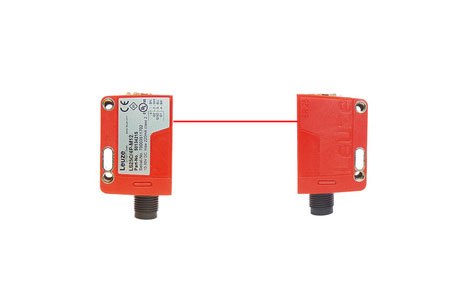Key Takeaway
Photoelectric sensors are widely used in industries like automotive, food, packaging, and material handling. These sensors detect objects made from materials like metal, plastic, and even clear items such as glass or liquids. They’re crucial in automating tasks like sorting, counting, and quality control.
In safety systems, photoelectric sensors help protect workers by detecting objects near dangerous machines. They’re also essential in robotics and machine vision, guiding robots and machines with precision. Their versatility makes them a go-to solution in various industrial applications.
Common Industrial Applications of Photoelectric Sensors
In manufacturing and automation, photoelectric sensors play a vital role. They are commonly used in detecting the presence or absence of objects on assembly lines. For instance, in food and beverage industries, these sensors can ensure that items are correctly placed on a conveyor belt, eliminating human error and enhancing production speed.
Additionally, industries like pharmaceuticals use photoelectric sensors to ensure packaging integrity. These sensors can count small items, verify labels, and even inspect for defects in the final product. Their adaptability allows them to be used in harsh environments, providing reliable detection even in extreme temperatures or dusty conditions. Their precision in such varied settings makes them indispensable across industrial applications.

How Photoelectric Sensors Are Used in Packaging and Automation
In packaging and automation, photoelectric sensors play a vital role in optimizing efficiency. Imagine a high-speed packaging line; these sensors ensure every box is filled and sealed precisely. Their quick response time helps in detecting irregularities, like missing items or misaligned products, preventing costly mistakes. This is critical in industries where even a minor delay can cause production setbacks, and every second counts.
On the automation side, these sensors detect the presence of parts and verify their alignment before robotic arms move to the next phase. This minimizes errors and downtime, leading to smoother, more reliable operations. The ability to detect even the smallest irregularities ensures that the system runs without interruption, keeping everything on schedule and boosting productivity.
The Role of Photoelectric Sensors in Safety Systems
In industrial settings, safety is non-negotiable, and photoelectric sensors are indispensable in safeguarding workers and machinery. These sensors detect objects or personnel, shutting down equipment instantly if someone enters a hazardous zone. For example, in machine areas, sensors can prevent accidents by automatically stopping machines when they sense an obstruction.
Their use extends to automatic doors and gates, ensuring they don’t close if something is in the way. The reliability and quick detection of these sensors make them essential in protecting both people and equipment. This contributes not only to worker safety but also reduces the risk of downtime caused by equipment damage or injury.
Photoelectric Sensors in Robotics and Machine Vision
In robotics and machine vision systems, photoelectric sensors act as the guiding force. They allow robots to detect an object’s size, shape, and distance, providing real-time feedback that enables precise movements. This is essential in applications like pick-and-place tasks where even a small misstep could lead to a production delay or product defect.
Machine vision systems also use these sensors for inspecting products in industries such as electronics or automotive. The sensors can detect even minute defects, ensuring that only top-quality products proceed through the production line. This level of accuracy helps reduce waste and ensures consistency, improving the overall output quality.
Future Applications of Photoelectric Sensors in Emerging Technologies
Looking ahead, photoelectric sensors are set to evolve with advancements in artificial intelligence and IoT. These sensors will not only detect objects but also collect data in real-time, helping industries move toward predictive maintenance. By anticipating equipment failures, these sensors will reduce downtime and improve overall system reliability.
In smart factories, as industries embrace Automation 4.0, photoelectric sensors will help optimize production lines by providing crucial data with minimal human intervention. They also hold potential in autonomous vehicles, assisting in object detection and obstacle avoidance. As these technologies advance, the role of photoelectric sensors will expand, driving innovation in automation and robotics.
Conclusion
Photoelectric sensors have proven themselves to be versatile, reliable, and essential in numerous industries. From ensuring safety and precision in manufacturing to contributing to the advancements in automation and robotics, these sensors are indispensable. Their future applications in emerging technologies show that their importance will only grow as industries become more automated and data-driven. Understanding their functionality and applications is crucial for anyone entering the industrial world, as they continue to shape the future of manufacturing, safety, and innovation.
